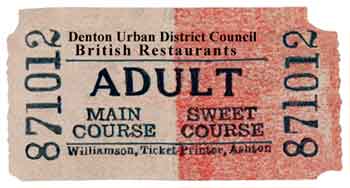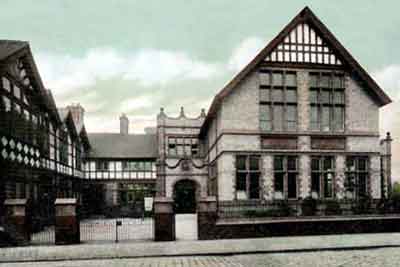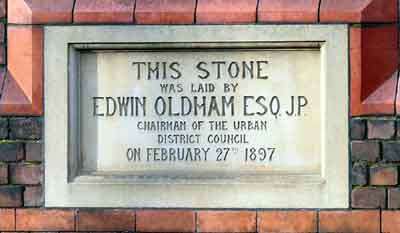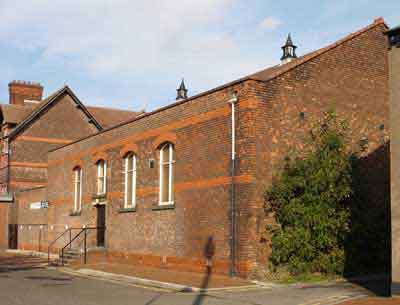Peel St, Denton
The origins of the Denton Public Library and Technical School lay in Denton Lads' Club, which was founded by Isabella Civil Scott née Prestwich,
the wife of Russell Scott. At first, the Lads' Club was in a row of cottages on the site but this quickly became popular and enlarged accommodation was needed.
This resulted in the first building on the site, which was to become the south wing of the final building and it was built in front of the cottages. William Mather MP opened this on the 4 Nov 1893.
The Lads' Club was noted for its summer camps held in the High Peak of Derbyshire. These proved to be popular and they became a model for other lads' clubs. From this, the Holiday Homes at Great Hucklow developed.
In 1896, the Scott family presented Denton with the Lads' Club, the cottages and the land upon which they stood. The family also donated £2,000 towards the cost of extending the premises to create sufficient accommodation for a library and technical school. The Science and Art Department granted £750 towards the cost. Finally, Denton Council made a grant of £1,500 for the original public library on Albert St, so that it could be converted to a town hall. The matter of a new public library and technical school was discussed at a council meeting and a report of this was published in a local newspaper.
Councillor Edwin Oldham JP laid the foundation stone of the extension, the north wing, which was to house the library and technical school, on the 27 Feb 1897. On completion of the extension and other alterations, Sir William Mather opened the new Public Library and Technical School on the 18 January 1900. Edwin Oldham JP was born at Romiley, Cheshire, in 1854 and on the 1911 census he is described as a retired Hat Manufacturer resident with his wife, Jane Walker, on Seymour St, Denton. Sir William Mather MP LLD MInstCE (1838-1920) was head of Mather and Platt Ltd at the Salford Iron Works and he was also a Liberal MP. He was knighted in 1902 as a widely respected and influential person who was an industrialist, entrepreneur, humanitarian and politician.
The Gymnasium (later the Festival Hall)
This was located on the ground floor of the Technical School (south wing) and the walls were fitted with climbing frames.
In order to combat the severity of rationing in the Second World War the Government established British Restaurants in 1941 and the gymnasium was requisitioned for this purpose. These restaurants sold basic meals at reasonable prices, off-ration. The cooking, catering and washing up, etc, was all done by volunteers, especially by members of the Women’s Voluntary Service (WVS) who wore dark green uniforms.

The Festival of Britain was held in 1951 and to commemorate this event Denton Urban District Council decided to convert the gymnasium into a hall and on completion of the work it was called the Festival Hall.
Also on the ground floor of the Technical School there was a suite of slipper baths for use by the local community for personal bathing at an affordable price because many homes did not have a bathroom.

 |
 |
Public Library & Technical School, early 20th century. |
Public Library & Technical School, May 2007. |
 |
Foundation Stone, Oct 2008. This foundation stone for the north wing was laid by Edwin Oldham JP on the 27 Feb 1897 when he was the second Chairman (1896/97) of Denton Urban District Council. He was a proprietor of the hat manufacturers, Higginbottom & Oldham of Ashworth St/Manchester Rd, Denton. Edwin Oldham (1854-15 Jan 1931) was resident on Seymour St and he retired on the 31 Dec 1907. |
 |
 |
Public Library & Technical School viewed from Queen St, Oct 2008. The building was constructed with header bond and is notable for its uses of brick dressings, which include band courses of bricks of different colours, and for its dormers and ornate chimney stack. |
Public Library & Technical School viewed from Queen St, Oct 2008. |
